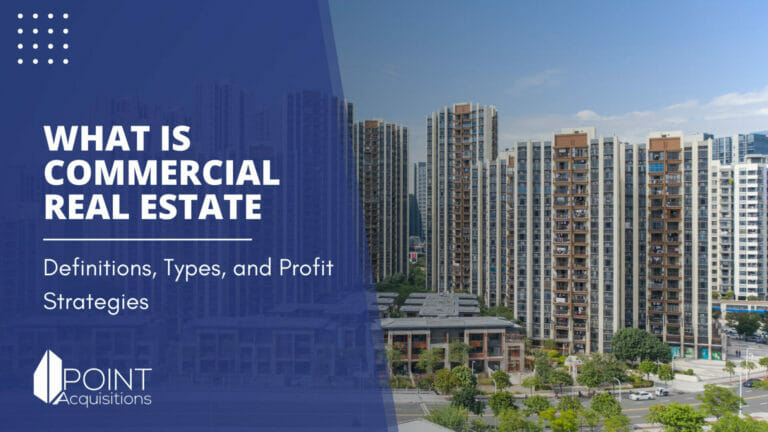
Commercial Real Estate Types: An Investor’s Complete Guide
Investing in commercial real estate can offer a significant return on investment. However, it requires careful planning and knowledge of the industry. As a potential investor, it’s crucial to understand the different types of commercial real estate available and what sets them apart.
This guide will provide a comprehensive overview of the most common commercial real estate types, including office buildings, retail spaces, industrial properties, multifamily housing, and hospitality properties. By the end of this guide, you’ll better understand each property type and be better equipped to make informed investment decisions.

Table of Contents
What Is Commercial Real Estate (CRE)?
Commercial real estate (CRE) refers to any property used for business purposes. Unlike residential real estate, which is primarily for living purposes, commercial properties are designed to generate income by renting or leasing space to businesses or individuals. This can include office buildings, retail spaces, industrial properties, multifamily housing, and hospitality properties.
Commercial real estate can be highly lucrative but requires careful research and planning to ensure a successful return on investment. Investors must consider various factors, including location, market demand, tenant occupancy rates, and potential for growth and development. Additionally, commercial real estate can come with higher risks than residential properties, as tenants may be more prone to financial volatility or industry-specific risks.
Commercial real estate can be an excellent investment for diversifying their portfolio and generating passive income. By understanding the different types of commercial properties and the unique factors that affect their profitability, investors can make informed decisions and maximize their returns.
The 8 Commercial Real Estate Types

1. Office Buildings
Office buildings are one of the most common types of commercial real estate. They can range from small, single-story buildings to towering skyscrapers and are designed to provide space for businesses to conduct operations. Office buildings often include conference rooms, shared workspaces, and parking lots.
Class A Buildings – Class A buildings are considered the highest quality office buildings in design, amenities, and location. They are often located in prime business districts and feature modern architecture, state-of-the-art technology, and high-end finishes. Class A buildings typically command the highest rents and attract the most prestigious tenants.
Class B Buildings – Class B buildings are typically older than Class A buildings and may be located in less desirable areas. They offer functional, no-frills office space and may have limited amenities. Class B buildings may appeal to tenants looking for more affordable rent options or who value a specific location over amenities.
Class C Buildings – Class C buildings are the lowest quality office buildings. They may be located in less desirable areas. They often feature dated designs and limited amenities and may require significant renovations. Class C buildings may suit tenants on a tight budget or investors looking to reposition a property.
Medical Office Buildings – Medical office buildings are commercial properties designed for use by healthcare providers. They may include a mix of general practitioners, specialists, and other healthcare professionals. Medical office buildings often require specific design features, such as examination rooms, medical waste disposal, and ample parking.
Executive Suites – Executive suites are flexible office spaces that provide small business owners and entrepreneurs with access to office space, conference rooms, and support services such as reception and administrative assistance. Executive suites often feature flexible leasing arrangements and can be a cost-effective option for small businesses.
Co-Working Spaces – Co-working spaces are shared office spaces that provide individuals and small teams with access to office space and amenities. They are often popular with freelancers, startups, and remote workers who value the flexibility and community aspect of working in a shared space.
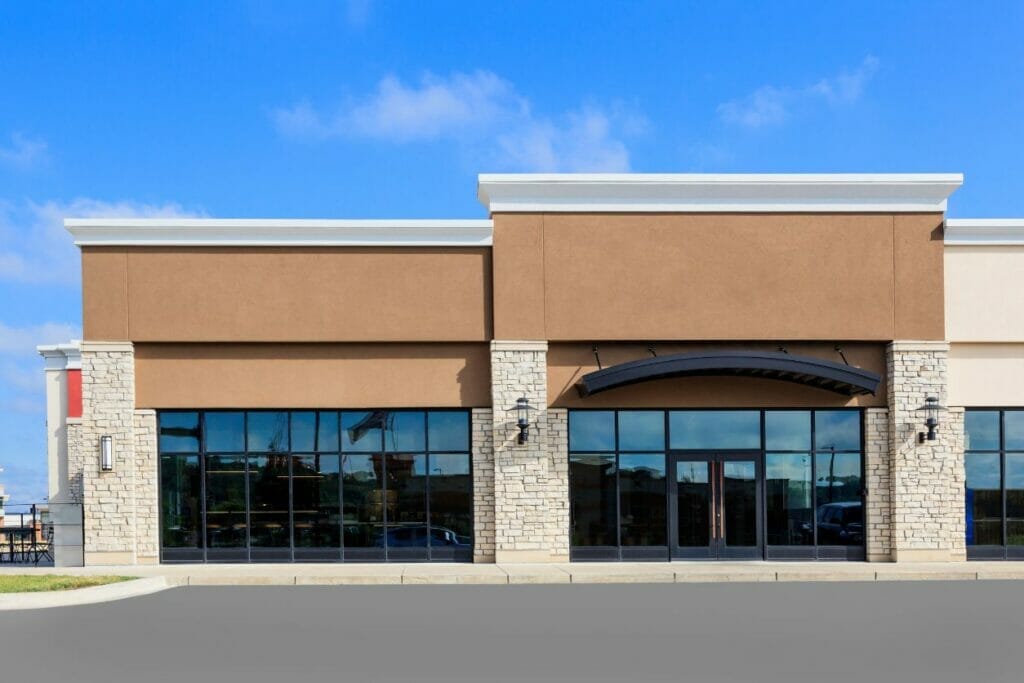
2. Retail Spaces
Retail spaces are commercial properties designed for businesses that sell goods or services directly to consumers. They can include shopping malls, standalone storefronts, and strip centers. Retail spaces are typically located in high-traffic areas with easy access to transportation and parking.
Shopping Malls – Shopping malls are large commercial properties that feature multiple stores, restaurants, and entertainment venues under one roof. They are typically anchored by one or more major retailers, such as department stores or supermarkets. Shopping malls often have many tenants, from small independent retailers to larger chain stores.
Standalone Storefronts – Standalone storefronts are commercial properties not part of a larger retail complex. They are typically located on high-traffic streets or in shopping districts. They may offer a variety of products or services.
Strip Centers – Strip centers are commercial properties with multiple small retail spaces arranged in rows. They are often located in suburban areas and may include a mix of tenants such as restaurants, salons, and small retailers.
Lifestyle Centers – Lifestyle centers are a newer type of retail space that combines shopping and entertainment in an outdoor setting. They often feature restaurants, cinemas, other amenities, and a mix of upscale retailers.
Power Centers – Power centers are retail properties dominated by large “anchor” stores, such as home improvement stores or warehouse clubs. They may also include smaller retailers and restaurants.
Outlet Malls – Outlet malls are retail properties that feature discounted products from brand-name retailers. They are often located in suburban areas and attract bargain hunters looking for deals on clothing, electronics, and other products.
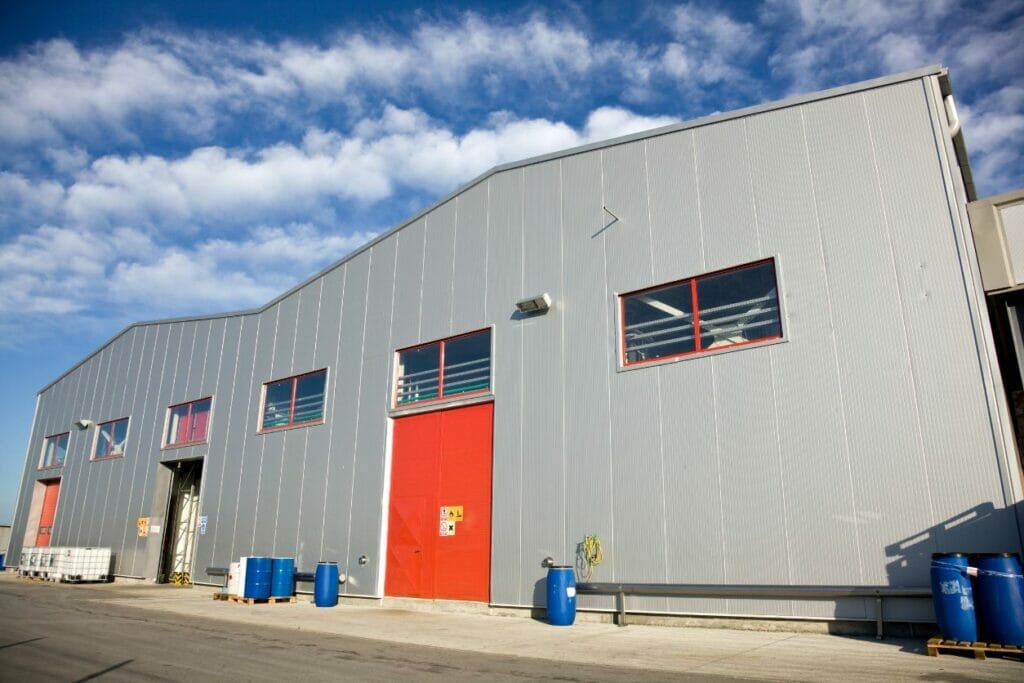
3. Industrial Properties
Industrial properties are commercial real estate properties used for manufacturing, production, and storage. They can include warehouses, factories, and distribution centers. Industrial properties are often located in areas with easy access to transportation routes. They can have unique features such as loading docks and specialized equipment.
Warehouses – Warehouses are commercial properties designed for storing, distributing, and transporting goods. They are often located near major transportation hubs such as airports, seaports, or highways. Warehouses can be further classified based on size, layout, and construction type.
Manufacturing Facilities – Manufacturing facilities are commercial properties designed for producing goods. They often feature specialized equipment and infrastructure such as heavy-duty power supply, specialized ventilation, and plumbing systems. Manufacturing facilities can be further classified based on the type of products they produce.
Flex Space – Flex space is an industrial property that offers a mix of warehouse and office space. It is often used by companies requiring storage and administrative functions, such as light manufacturing or e-commerce businesses.
Data Centers – Data centers are commercial properties designed for storing and processing digital data. They require specialized infrastructure such as redundant power and cooling systems, high-speed connectivity, and physical security measures. Data centers can be further classified based on their size, power density, and level of redundancy.
Cold Storage – Cold storage facilities are commercial properties designed to store and distribute perishable goods, such as food and pharmaceuticals. They require specialized temperature control and monitoring systems to maintain product quality and safety.
Showrooms are commercial properties designed to display products, such as furniture, appliances, or automobiles. They often feature large, open spaces and high ceilings to showcase products effectively.

4. Multifamily Housing
Multifamily housing properties include apartments, condominiums, and townhomes. These properties are designed to provide housing for multiple families and can range from small buildings to high-rise complexes. Multifamily properties are often located in residential areas and can include amenities such as fitness centers, pools, and community spaces.
Apartment Buildings – Apartment buildings are commercial properties with multiple residential units within a single building. They can range in size from small buildings with a few units to large high-rise complexes. Apartment buildings can be further classified based on age, location, and amenities.
Townhomes and Condos – Townhomes and condos are types of multifamily housing that offer individual units that the occupants own. They often feature shared amenities such as pools, fitness centers, and outdoor spaces. Townhomes and condos can be further classified based on size, location, and ownership structure.
Student Housing – Student housing is a type of multifamily housing designed for students attending college or university. It can take the form of traditional dormitories or apartment-style units. Student housing can be further classified based on the proximity to campus, the number of units, and the amenities offered.
Senior Living – Senior living is a type of multifamily housing designed for older adults requiring varying care and assistance. It can include independent living, assisted living, and skilled nursing facilities. Senior living can be further classified based on the level of care provided and the amenities offered.
Affordable Housing – Affordable housing is multifamily housing designated for low-income individuals and families: subsidized apartments, Section 8 housing, or other government-supported programs. Affordable housing can be further classified based on income restrictions, location, and ownership structure.

5. Hospitality Properties
Hospitality properties include hotels, resorts, and other types of accommodations. These properties are designed to provide temporary housing, often including restaurants, bars, and recreational activities.
Hotels – Hotels are commercial properties that offer guests lodging and a range of amenities and services. They can range in size from small boutique hotels to large resorts. Hotels can be further classified based on their location, level of service, and target market.
Motels – Motels are similar to hotels but typically offer more basic amenities and services. They are often located along highways and designed to cater to travelers who need a place to stay for a short period.
Resorts – Resorts are hospitality properties offering various amenities and services, including lodging, dining, entertainment, and recreational activities. They are often located in desirable vacation destinations and offer guests a complete vacation experience.
Extended-Stay Lodging: Extended-stay lodging properties are designed for guests who need accommodations for an extended period, typically a week or more. They offer larger rooms or suites with kitchenettes and other amenities that make them suitable for longer stays.
Hostels – Hostels are budget-friendly hospitality properties that offer shared accommodations, typically dormitory-style rooms with bunk beds. They are often popular with budget-conscious travelers, students, and backpackers.
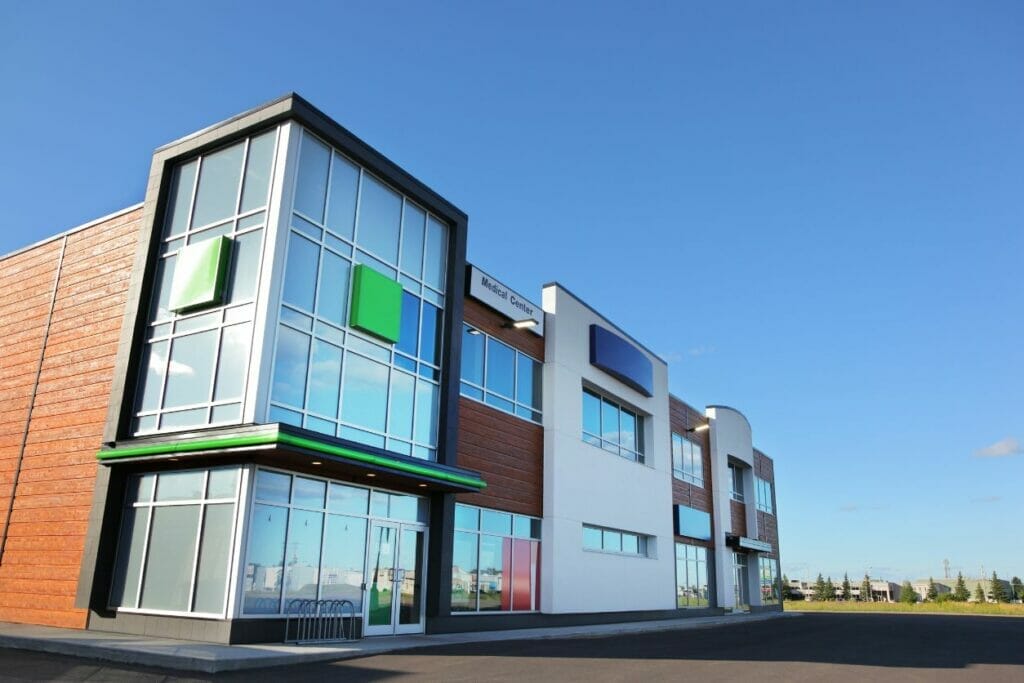
6. Medical Buildings
Medical buildings are commercial properties designed for healthcare providers. They can include hospitals, medical offices, and clinics. They can include specialized equipment and features such as exam rooms and laboratories. Medical buildings are often located near residential areas.
Hospitals – Hospitals are large medical buildings offering a range of medical services, including inpatient and outpatient care, emergency services, and specialized medical treatments. They can range in size from small community hospitals to large academic medical centers.
Medical Offices – Medical offices are smaller medical buildings that typically house individual or group practices of healthcare providers, such as doctors, dentists, and chiropractors. They can be further classified based on the type of medical practice and the specialties of the healthcare providers.
Clinics – Clinics are medical buildings that offer outpatient care and specialized medical treatments, such as dialysis, imaging, and physical therapy. They can range in size from small neighborhood clinics to large outpatient centers.
Urgent Care Centers – Urgent care centers are medical buildings that offer walk-in medical care for minor injuries and illnesses. They typically offer extended hours and are an alternative to emergency room care for non-life-threatening medical issues.
Research and Development Facilities – Research and development facilities are medical buildings dedicated to medical research, including clinical trials and drug development. They are often affiliated with academic medical centers and pharmaceutical companies.
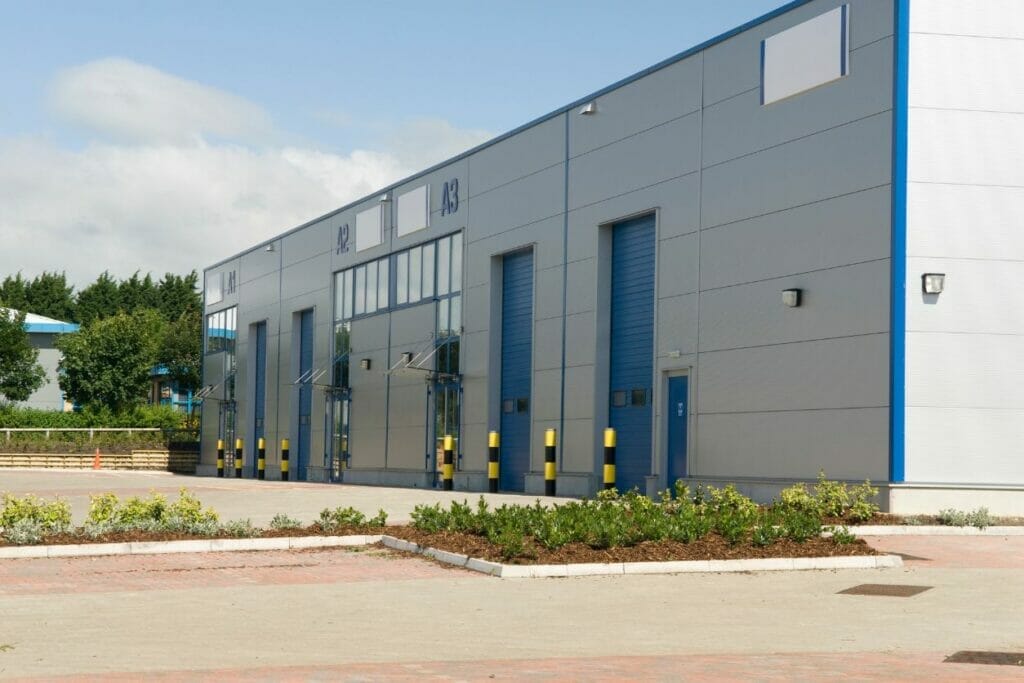
7. Mixed-Use Properties
Mixed-use properties are commercial properties that combine different types of space, such as retail, office, and residential. These properties are designed to provide various services and amenities in one location. They can be located in urban or suburban areas.
Residential and Retail – Mixed-use properties that combine residential units with retail space, such as ground-floor shops and restaurants. These properties are often located in urban areas and cater to residents who value walkability and convenience.
Residential and Office – Mixed-use properties that combine residential units with office space. These properties are often located in urban areas and appeal to residents who work from home or desire a short commute to work.
Retail and Office – Mixed-use properties that combine retail space with office space. These properties are often located in urban areas and cater to businesses that value visibility and foot traffic.
Hotel and Retail – Mixed-use properties that combine hotel space with retail space. These properties are often located in tourist destinations and appeal to travelers who value convenience and proximity to shopping and dining options.
Residential, Retail, and Office – Mixed-use properties that combine residential units, retail space, and office space. These properties are often in dense urban areas and offer residents a complete live-work-play experience.
8. Special Purpose Properties
Special purpose properties are commercial properties designed for specific use, such as movie theaters, churches, and schools. These properties can be challenging to repurpose or sell, as they are often designed for a specific use and may not have broad appeal.
Educational Facilities – Special properties such as schools, colleges, and universities are used for educational purposes. These properties can be leased to educational institutions or owned by them.
Government Buildings – Special purpose properties owned or leased by government entities, such as courthouses, police stations, and post offices. These properties are often leased on long-term, triple-net leases, or even build to suit which provide a stable income for investors.
Religious Buildings – Special-purpose properties such as churches, synagogues, and mosques are used for religious purposes. These properties can be leased to religious organizations or owned by them.
Recreational Facilities – Special properties used for recreational purposes, such as sports stadiums, golf courses, and theme parks. These properties can generate substantial revenue from ticket sales, sponsorships, and concessions.
Healthcare Facilities – Special purpose properties used for healthcare purposes, such as nursing homes, rehabilitation centers, and hospices. These properties are often leased on long-term, triple-net leases, which provide a stable income for investors.

What Type of Commercial Real Estate is the Most Profitable?
There is no one-size-fits-all answer to which type of commercial real estate is the most profitable, as profitability depends on various factors, such as location, market demand, tenant mix, and property management. Each type of commercial real estate has unique advantages and challenges, and investors should carefully evaluate each type’s potential risks and rewards before making an investment decision.
For example, office buildings in prime locations in large metropolitan areas can generate high rental income and appreciation potential. However, they may also be more susceptible to economic downturns and market fluctuations. Retail properties with strong anchor tenants and high foot traffic can generate stable income. However, they may require higher tenant improvement costs and more frequent tenant turnover.
Industrial properties in strategic locations near transportation hubs and logistics centers can also be profitable, as they are in high demand from e-commerce and logistics companies. Multifamily properties in growing markets can offer stable cash flow and appreciation potential. However, they may require more active property management and maintenance.
Ultimately, the most profitable type of commercial real estate for an investor will depend on their investment goals, risk tolerance, and market conditions. Investors must conduct thorough market research and due diligence and seek advice from real estate professionals before making an investment decision.
In Conclusion
Commercial real estate is a diverse and dynamic asset class that offers a range of investment opportunities to investors. From office buildings to retail spaces, industrial properties to hospitality properties, each commercial real estate type has unique advantages and challenges.
Investing in commercial real estate can be a complex process that requires careful market research, due diligence, and strategic planning.
However, with the right approach and guidance from real estate professionals, investors can build a diversified portfolio of commercial properties that generate stable income and potential for long-term appreciation.
Contact us today if you’re interested in exploring commercial real estate investment opportunities. Our experienced team would happily answer any questions and help you find the right investment property for your goals.
About The Author

Jesse Shemesh
Disclaimer
Please note that Point Acquisitions is not a tax expert or tax advisor. The information on our blogs and pages is for general informational purposes only and should not be relied upon as legal, tax, or accounting advice. Any information provided does not constitute professional advice or create an attorney-client or any other professional relationship. We recommend that you consult with your tax advisor or seek professional advice before making any decisions based on the information provided on our blogs and pages. Point Acquisitions is not responsible for any actions taken based on the information provided on our blogs and pages.
1031 Exchange Capital Gains Tax Deferral
According to a 2021 report by the National Real Estate Exchange Services (RES), over 240,000 1031 exchange transactions were completed in the United States, totaling $100 billion. This impressive figure underscores the role of 1031 exchanges in the real estate…
Read More1031 Exchange Benefits
As of Q4 2023, the national vacancy rate for all commercial property types in the United States sat at 9.2%, according to CBRE’s latest insights and research. This represents a slight decrease compared to the previous quarter and suggests a…
Read More1031 Exchange Legal Considerations: A Must-Read Guide
You’re in the right place if you’re considering a 1031 exchange for your commercial real estate investments. Whether you’re a seasoned investor or just dipping your toes into the market, understanding the legal landscape of 1031 exchanges is key to…
Read More

